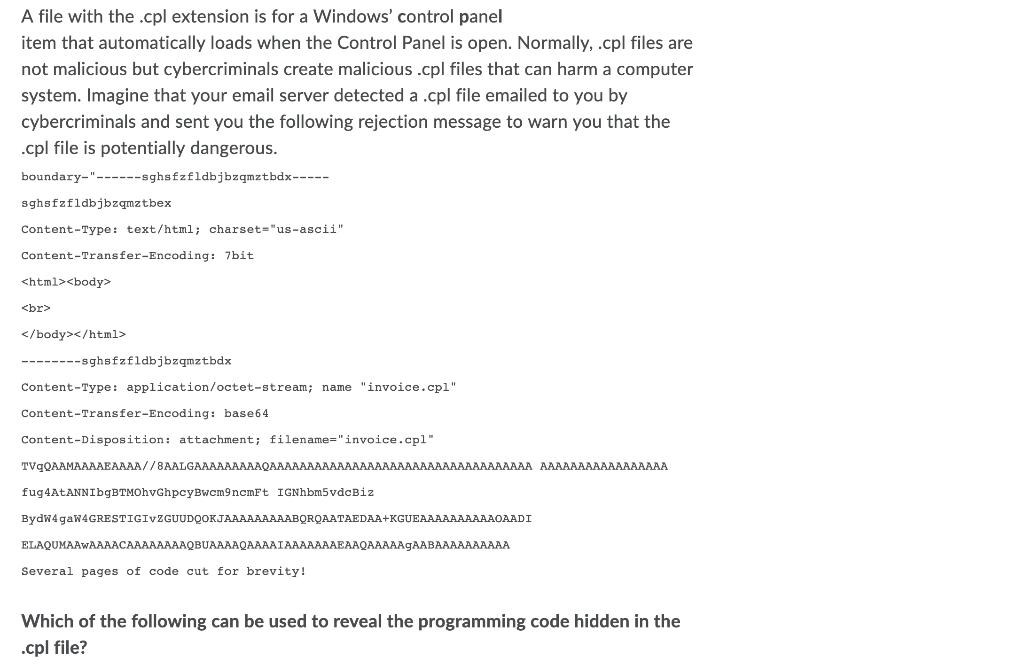Yes, ok, you have a PDF document being returned in binary format (I suppose content-type is application/pdf, and it is an octet stream). WHY do you wish to convert it to base64? With nodejs it is pretty straightforward, but if you are converting it to ASCII, can we make sure you doing so for a good reason. Base64 is a group of similar binary-to-text encoding schemes that represent binary data in an ASCII string format by translating it into a radix-64 representation. The term Base64 originates from a specific MIME content transfer encoding.
- Application/octet-stream Base64
- Octet Stream Vs Base64
- Image/octet-stream Base64
- Octet Stream To Base64 Javascript
- Application/octet-stream Base64 To Image
Warning: Our tools are server side tools, unless we stated otherwise. We do not keep or inspect the contents of the entered data in any way, and all communications with our servers are made through HTTPS (secured SSL). Regardless, we are strongly advise to avoid using sensitive data for our tools.
Application/octet-stream Base64

Octet Stream Vs Base64
Base64 is a group of similar binary-to-text encoding schemes that represent binary data in an ASCII string format by translating it into a radix-64 representation. The term Base64 originates from a specific MIME content transfer encoding.
Base64 encoding schemes are commonly used when there is a need to encode binary data that needs to be stored and transferred over media that are designed to deal with textual data. This is to ensure that the data remain intact without modification during transport. Base64 is commonly used in a number of applications including email via MIME, and storing complex data in XML.
Check here for Base64 Decode Explanation
or check our knowledgebase about Base64 encoding
Provides Base64 encoding and decoding in a streaming fashion (unlimited size). When encoding the default lineLength is 76 characters and the default lineEnding is CRLF, but these can be overridden by using the appropriate constructor.The default behavior of the Base64OutputStream is to ENCODE, whereas the default behavior of the Base64InputStream is to DECODE. But this behavior can be overridden by using a different constructor.
Image/octet-stream Base64
This class implements section 6.8. Base64 Content-Transfer-Encoding from RFC 2045 Multipurpose Internet Mail Extensions (MIME) Part One: Format of Internet Message Bodies by Freed and Borenstein.

Since this class operates directly on byte streams, and not character streams, it is hard-coded to only encode/decode character encodings which are compatible with the lower 127 ASCII chart (ISO-8859-1, Windows-1252, UTF-8, etc).
Octet Stream To Base64 Javascript
Note: It is mandatory to close the stream after the last byte has been written to it, otherwise the final padding will be omitted and the resulting data will be incomplete/inconsistent.
You can set the decoding behavior when the input bytes contain leftover trailing bits that cannot be created by a valid encoding. These can be bits that are unused from the final character or entire characters. The default mode is lenient decoding.
- Lenient: Any trailing bits are composed into 8-bit bytes where possible. The remainder are discarded.
- Strict: The decoding will raise an
IllegalArgumentExceptionif trailing bits are not part of a valid encoding. Any unused bits from the final character must be zero. Impossible counts of entire final characters are not allowed.
Application/octet-stream Base64 To Image
When strict decoding is enabled it is expected that the decoded bytes will be re-encoded to a byte array that matches the original, i.e. no changes occur on the final character. This requires that the input bytes use the same padding and alphabet as the encoder.